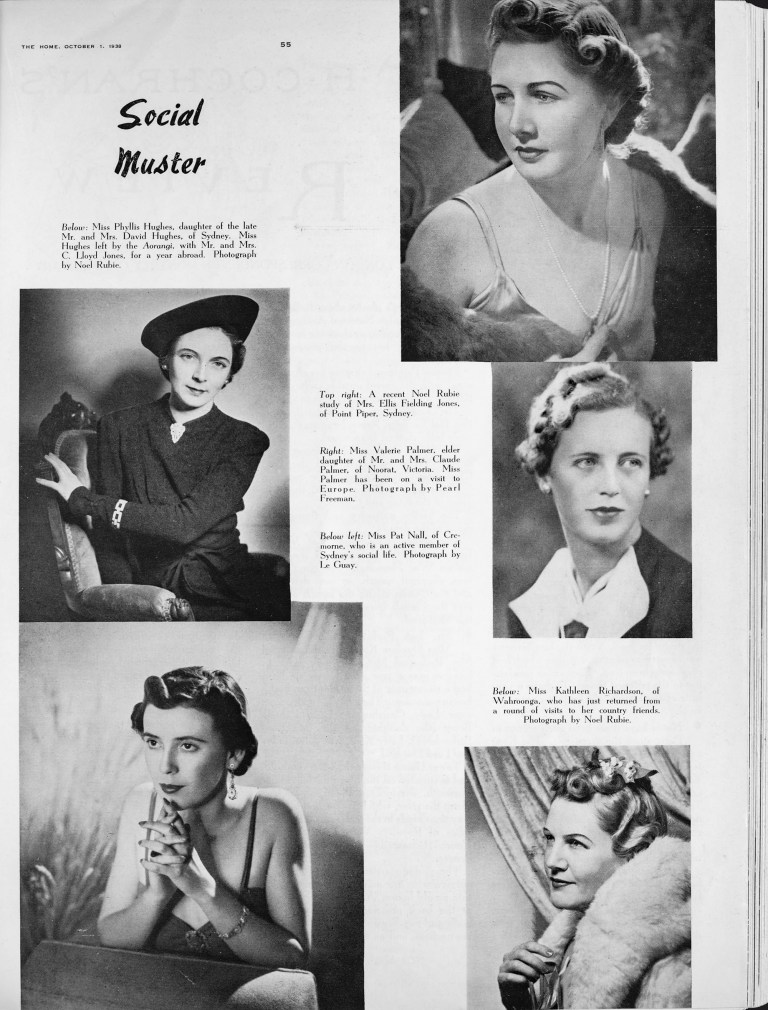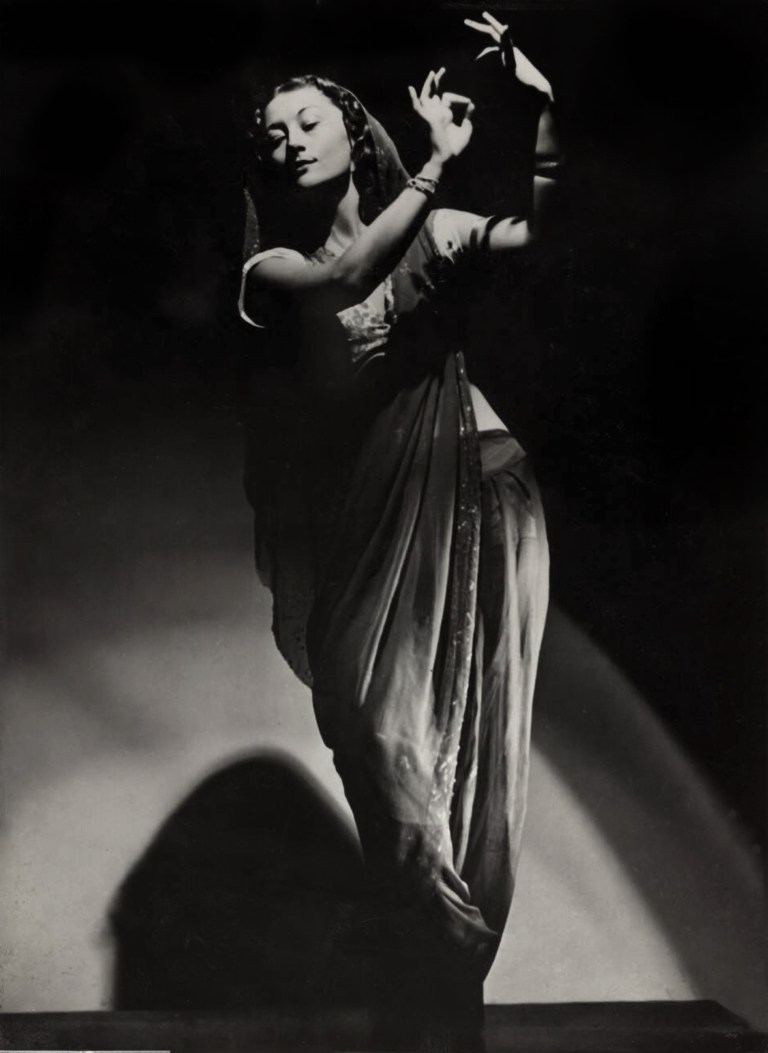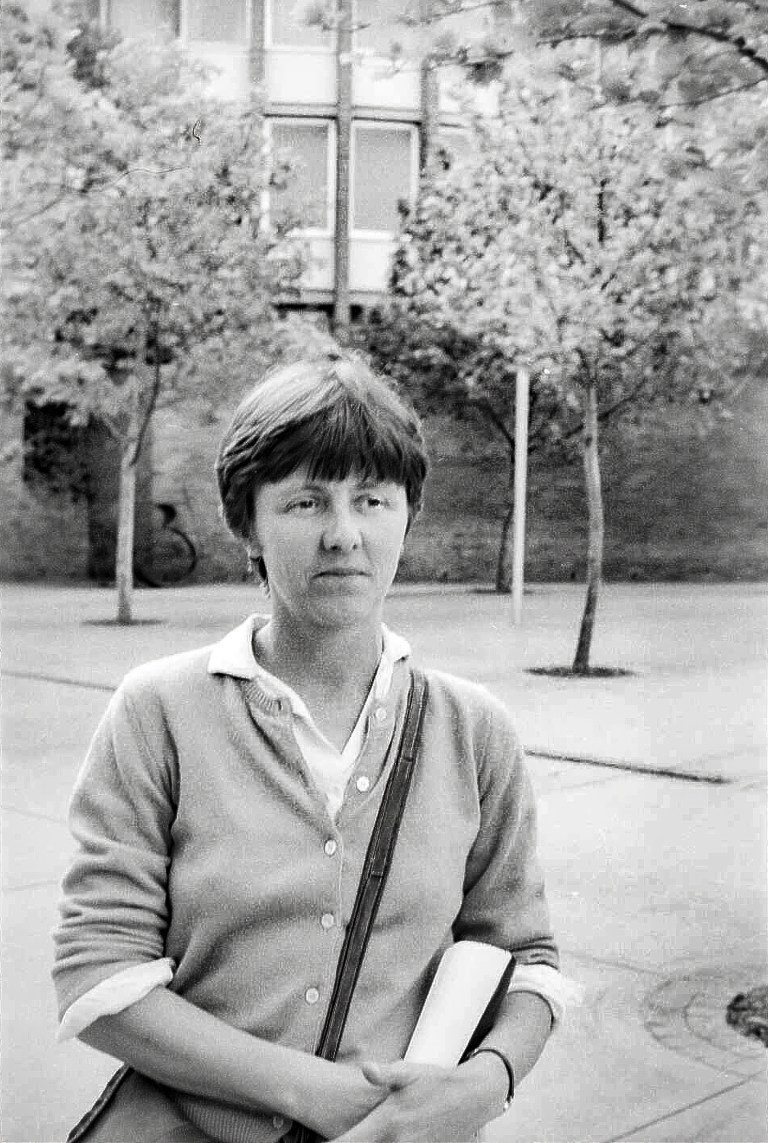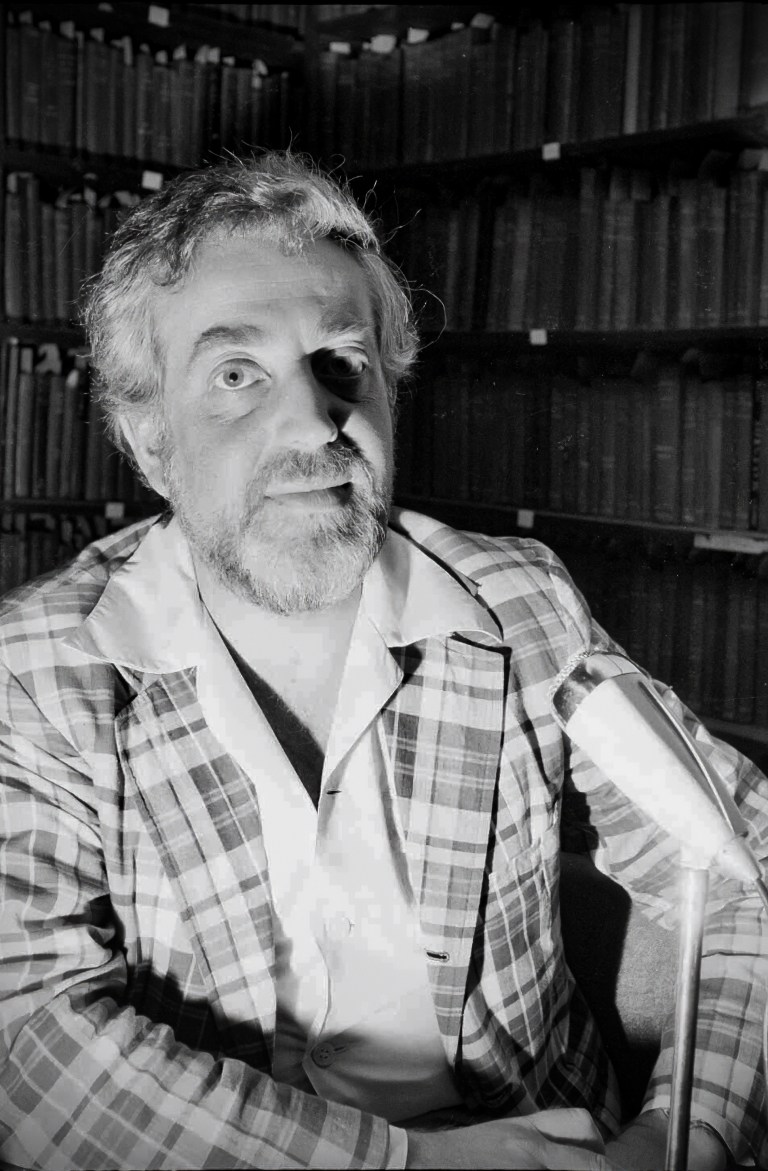 It is a human genetic trait to glean and gather; it’s a basic impulse that is behind civilisation, trade and the development of currency, but it is also intellectual.
It is a human genetic trait to glean and gather; it’s a basic impulse that is behind civilisation, trade and the development of currency, but it is also intellectual.
With a mobile phone in our pocket we are learning more about the value of photography, and sound, simply as collections of data to be used for later purpose. Records become important when they interconnect with others, and it is in relating the lives of Hazel de Berg (recently mentioned), Heather George and Noel Rubie, each a relatively unsung but nevertheless significant Australian photographer, that these links appear.
So, let’s rewind Australian history a little and so meet de Berg, in Deniliquin, a then remote place 725 kilometres from Sydney and 285 kilometres north of Melbourne; I certainly considered it to be far into ‘the Outback’ when, as a visiting city-slicker teenager, on the Morris property I held lambs while their tails were docked, laughing uncomfortably as they joked about trying the Elastrator on me!
De Berg was born there on 21 March 1913 because her father moved the family frequently in his calling as a Methodist minister. They only settled when she was fifteen when in Sydney she attended Methodist Ladies’ College until 1932, contemporary with photographer Olive Cotton, who was in the cohort two years ahead of her. She may not have known Cotton well, but after training as a radiographer, one of the first women to do so (she said she loved machines) she joined, as a partner in his studio, the remarkable Noel Rubie, a photographer cum pharmacist cum playwright who was also quite a significant Modernist painter and Archibald Prize finalist in 1930 with a portrait, now held in theAGNSW, of Walter Collett Shoppee, son of a Ballarat gold-miner and veteran of the Crimean War and the ‘Indian Mutiny’.
One can track Rubie’s kaleidoscopic career through Dun’s Gazette register of businesses to find that he initially set up with Jack E. Turner as a commercial artist in November 1930; then in cosmetic manufacture in May 1934 with Jessica Harcourt before Hazel Holland (de Berg) became his partner in his photography studio at 2 Belmore Rd., Randwick from December 1936, while he was simultaneously establishing the Wynyard Pharmacy, on the Ramp at Wynyard Station with Arthur H. Dowse, which he renamed the ‘Wynyard Drug Store’ the following January.

In 1938 Rubie contributed a series of portraits of women to The Home: An Australian Quarterly one of which was of 31-year-old Heather George, herself a photographer and later a regular contributor to Walkabout magazine.

The caption under the wistful portrait of George reads “Miss Heather George, of Artarmon, is a youthful Sydney artist who has lately abandoned painting for photography”. She also worked at Noel Rubie’s studio and later practiced at a series of Melbourne and Victorian country photography studios.

On the preceding page of this 1938 issue of The Home, the subject of Rubie’s full-page photograph is Margaret Doyle who three years later became the first woman newsreader and national radio announcer in Australia; hers is also the earliest surviving news recording contained in the ABC archive, an item on protecting active servicemen in World War II from creditors. Her portrait reveals how Rubie has placed Heather in a landscape setting; in both cases, but more apparent in the picture of Doyle, he has exercised some labour in the darkroom to montage the landscape elements and, for the latter, overlaid the text of Swinburne’s The Garden of Proserpine.

Rubie, and the editors of Home, and those at The Bulletin for which he continued providing such portraits into the 1950s, had an uncanny knack of choosing young women for their pages who were to lead significant careers; another example being Robin Dalton AM (née Eakin) who became an Australian literary agent, film producer, memoirist, journalist, television performer and intelligence agent, and who died only last year at age 101, and of whom Clive James commented; “for her, Heaven was other people.”
His use of montage places Rubie as a contemporary of the modernist Australian photographers Laurence Le Guay and Max Dupain, and his painting, which he exhibited from the 1930s onward is also clearly an influence on his aesthetic.
Portrait of a Woman with its graded passages of broken, square brush strokes, in bright unblended pthalo green and chrome yellow, resembles the technique of Grace Cossington Smith in her famous The Lacquer Room of the same year, and the bookcase on which the subject sits reveals Rubie’s reading of Herbert Read‘s Art Now: an Introduction to the Theory of Modern Painting and Sculpture published only three years earlier.
However, the face of his subject might be lifted from another of his pictures of Heather George whom it resembles down to the tasseled scarf she wears in the portrait above; in fact the sense that she is ‘pasted-in’ is due to its harder shading that matches nothing else in the softly-lit interior. The figure is ill-at-ease in the tilting and conflicting orthogonals of the scene.
![Noel Rubie (Australian, 1901-1976). [Portrait Of A Woman] 1936. Oil on canvas on board, signed and dated lower right, 43.8 x 35.7cm](https://onthisdateinphotography.com/wp-content/uploads/2023/01/noel-rubie-australian-1901-1976.-portrait-of-a-woman-1936.-oil-on-canvas-on-board-signed-and-dated-lower-right-43.8-x-35.7cm.jpg?w=768)
Added to Rubie’s dabbling in painting is his involvement with the National Theatre as a leading photographer, actor, writer and set designer and like Dupain, he photographed dancers of the Ballets Russes de Colonel de Basil and performers in the more avant-garde Bodenwieser Ballet.
![Sono Osata 1940 gelatin silver ; 24.6 x 19.5 cm. Ballets russes de Colonel W. de Basil stamped on verso- Noel Rubie Pty Ltd. Inscribed in ink l.c.- To Margaret [Swallow] : Love : Sono.](https://onthisdateinphotography.com/wp-content/uploads/2023/01/sono-osata-1940-gelatin-silver-24.6-x-19.5-cm.-ballets-russes-de-colonel-w.-de-basil-stamped-on-verso-noel-rubie-pty-ltd.-inscribed-in-ink-l.c.-to-margaret-swallow-love-sono..jpg?w=768)


Noel Rubie retired from his partnership with Hazel on 12 October 1938 having set up Rubie, Noel, Pty., Ltd. industrial and commercial photographers with directors Arthur H. Dowse, Edwin Paterson and Ella M. Hamilton, only days before, with a capital of £2000 in £1 shares. While it is likely that Heather George continued to be employed by Rubie’s company after its founding, de Berg was still living with her parents when on 15 May 1941, at the Great Synagogue, Sydney, she married Lithuanian-born company director Woolf (William) de Berg, having converted to Judaism before the marriage.
The enterprising Rubie in the meantime established Kendal Crawford Laboratories, manufacturers and distributors of chemicals and cosmetics in May 1940, and Roto Displays in April 41, then, with Arthur Dowse and Reginald Perier, started a film company “Perier Productions” incorporated in Noel Rubie Pty. Ltd’, in March 1947, after the War.
Clearly Rubie was something of the archetypal bachelor; Wilfrid Thomas, in his ‘Radio Roundabout’ in The Australian Broadcasting Commission’s ABC Weekly of 18 October 1947 described Rubie as;
“…a successful photographer, painter, pharmaceutist, and playwright, [who] converted two old-fashioned houses into a fantasy, with— Swimming-pool overlooking the Harbour; Balcony like a promenade deck; Naughty ’Nineties bar with proscenium; Discreet alcove with crystal on cedar like a private room at the Cafe Royal; Book-lined lounge with mural map of the world; Music-room with star-studded azure wall; The elegant Mr. Ruble plays host to Sydney’s beauties and aesthetes. Say, how did I get an invite?”
While by 1948, when he was approaching his fifties, he had sold his black yacht to the actor Grant Taylor (Bitter Springs, 1950; On The Beach 1959), Rubie was still in the news as a bon-vivant, here seen on the cover of the 1954 Home Beautiful devoted to the trend in outdoor barbecues in Sydney;

“Noel Rubie has built himself, to his own design, a modest Spanish mansion on the foothills of the Blue Mountains, six miles beyond Windsor. The front of the house looks at the ranges; at the back is an enclosed courtyard which traps the sun and discourages gusty mountain breezes. Mr. Rubie is a bachelor who dislikes breezes, likes steaks grilled over a charcoal fire, but won’t put up with any of the discomforts of outdoor picnics. So, in a corner of the courtyard, secure from the wind and the prying eyes of anything lacking wings, he has built a barbecue with a chimney that draws like a dream.”
By the late 1950s Heather George had become a freelance photographer and photojournalist. Another coincidental connection was made when she was interviewed by Hazel de Berg on 28 December, 1965, saying that;
“During the war years I became interested in photography and it was and still is part of my livelihood. I believe that the best photography is usually the result of an art traininrg and approach. I have for some time been a regular freelance contributor to Walkabout magazine, doing picture stories and articles. This gives me scope for the sort of documentary photography I like to do.”
The turning point for her had come in 1952 when she stayed for months in the outback of the Northern Territory, where her sister and her sister’s husband were stationed at several reservations, and there photographed indigenous subjects including the Warlpiri people whom she described as among Australia’s “most hardy and interesting aborigines”, and others on the reserves, including school children at Areyonga Aboriginal Reserve, or working in cattle stations including Wave Hill.
Her photographs of them, especially her stark quasi-silhouette of family group on the threshold between traditional and European-imposed lifestyles, are imbued with affection.



Hazel de Berg, after her marriage volunteered for Talking Books for the Blind. Her introduction to tape recording came when in 1957 Ken Bruce, founder of the Institute in New South Wales, and himself blind, asked her read a book on tape. She next recorded Dame Mary Gilmour’s Old Day, Old Ways and decided interview the author, then in her nineties, for background information. It is the first of the de Berg oral history collection, held at the National Library of Australia in Canberra. She remembered that;
“I have come a little way along the road a blind man showed me — a road I hope someone else treads in the centuries ahead — but I have come a long way in love, and perhaps knowledge, for the people who express our country.”
An amateur, undaunted by the fame or high standing of her subjects, and with no special connections in Australian literature apart from her distant cousin poet David Campbell, she went on to make nearly 1300 recordings, using first a locally-manufactured Nova deck which cost what a quality laptop would today, before in the early sixties, having taped all sixty-eight living recognised Australian poets reading their own verse, she graduated to the top-quality German UHER machine which was then used in the film industry and valued, in 2023 money, at A$6,000; the early tapes each contain five or six interviews which increased to three or four tapes for one due in part to the higher tape speed in the UHER, and when she was reimbursed in 1960 with £100 from the Commonwealth Literary Fund after presenting her work at the Adelaide Festival. For donating the tapes to the National Library of Australia Sir Harold White, National Librarian, provided her a further Commonwealth Literary Grant. The library funded the transcriptions and from 1972 paid her an annual grant. By 1973 she had made 750 recordings and the tapes were being converted to phonograph records for preservation.
De Berg’s interviews are pure record; in the edited product her own voice is removed from the recordings, as are her questions, in contrast to what is customarily done, much to the annoyance of some who missed such structure, like Brett Whitelely whose interview is an almost incoherent ramble. Her subjects speak for themselves in a monologue which in the cases of those now dead, as most are, is like a haunting.

She also photographed each of her interviewees in a similar objective and literal manner. Her portrait of Helen Garner in 1982, whose prize-winning first novel Monkey Grip had just been released as a movie, best exemplifies that style.
Her only subjects that appear to have tempted her to any creative interpretation are, understandably, the Pop artist Martin Sharp who created the cover art for Cream’s Disraeli Gears and Wheels of Fire albums, whois shown overshadowed by his forerunner Sid Nolan; and journalist Craig McGregor (who died last year on 22 January) whose subjective, first-person, literary approach to journalism comes across in his casual pose in front of a tiny crowded desk with its Planet lamp.


Otherwise hers are quite artless images, usually shot, as is the case with the Garner snap, with the subject’s head at centre of frame in a point-and-shoot style, and in several cases with a flash perched on top of the camera which, when turned for vertical framing, generates a harsh under-light and errant nose-shadows, as in this shot of Morris Lurie—though it does lend a tragi-comic quality to the writer of the hilarious Rappaport novels and of the heart-wrenching To Light Attained.

Others are shot at literary events while the subjects are presenting on stage or addressing an audience from a table during at a conference dinner.
I have lost forever the voices of my now-dead father, mother, brother and one of my closest friends, and the pictures I have of them are too few. The advent of the mobile phone and its capacity to photograph and to record sound is thus a revolution that we should appreciate. Record everything you can; it is soon gone.
Must it be done ‘artfully’?
Acclaimed and accomplished photojournalist Robert McFarlane, also a Walkabout contributor in formative years of his career, turns de Berg’s essential, matter-of-fact style on the archivist herself, in this warmly candid, off-the-cuff portrait. Explaining his approach to Gael Newton he said “I see making pictures as a receiving of the image. Where you stand, both physically and emotionally, decrees the kind of picture you, through your camera, will receive”.

You’ll find further information on Hazel de Berg and Heather George on the Wikipedia entries I have contributed, and I’m working on one for the remarkable but little-known Noel Ruble…uploaded 14/1/2023











James!! Just two lines to wish you a happy new year and to tell you that I enjoy enormously your posts!! A big hug Max
LikeLike
Thank you Max, and fond New Year wishes to you, and even more success this year – wonderful to see your work getting the attention it well deserves!
LikeLike